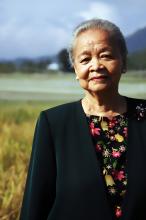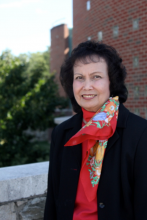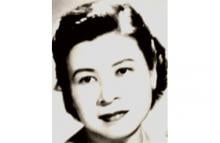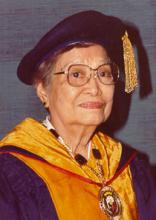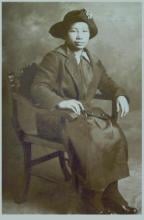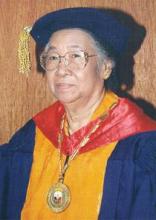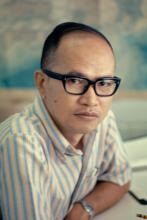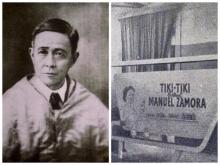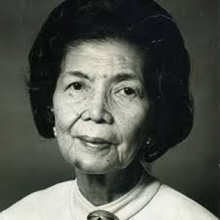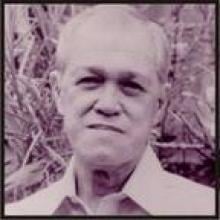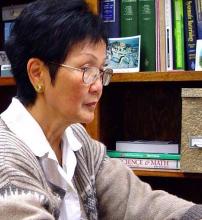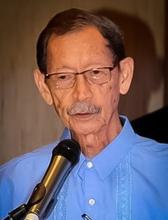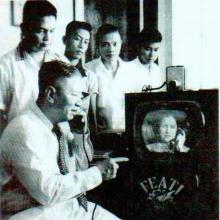Philippines
News
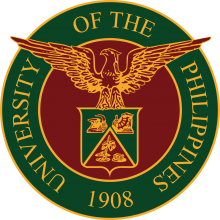
19 Jan 2007
Despite the signing of the Comprehensive Agreement on Respect for Human Rights and International Humanitarian Law (CARHRIHL), neither the Philippine government nor the CPP-NPA-NDF has been truly determined to respect human rights in the Philippines. The burden then lies in civil-society organizations and international political entities.

18 Jan 2007
Archives and museums are distinct institutions that follow different standards principles and practices in managing their respective collections. However, many museums today, such as the UP Vargas Museum, have adopted archival procedures as well, thus, blurring the line between the two institutions.

16 Jan 2007
A study on the memory of a group of Filipinos shows that a deeper level of processing, or semantic processing, in a person’s memory has a significant effect on explicit memory or the intentional recollection of past events or experiences.

11 Jan 2007
A comparative study of fine and coarse ambient aerosol samples between an industrial and commercial site and a less polluted site shows the significant effect of industrialization and commercialization on air quality in Metro Manila.

11 Jan 2007
The accurate forecast of a cyclone’s track and intensity is of great importance to lessen the damage it may cause. Not all countries are financially capable to use global circulation models (GCM) in forecasting. Thus, an economical solution for improving the resolution of cyclone forecast is to nest a regional climate model within a global model.

11 Jan 2007
Holograms have so far been considered as a contraption of the future. However, many studies today have made holography a reality. A potential holographic light source is the hydrogen Raman Shifter, a multi-wavelength pulsed coherent light source that is both compact and inexpensive.

19 Dec 2006
During the 28th NAST Annual Scientific Meeting last July 13, 2006, 23 scientists of the University of the Philippines received awards for their outstanding performance and contribution to science and technology.

19 Dec 2006
The Avestro experiment has discovered that a wireless client can still successfully receive and play audio clips such as music, interviews and dialogues sent by the RTP server. There is no significant difference in audio quality among the wireless and the wired connections.

19 Dec 2006
Radio broadcasting in the Philippines was probably the first in Asia. According to Dr. Elizabeth L. Enriquez, “It began during the third decade of the American colonial period when American investments dominated commerce and business.”

18 Dec 2006
Los Banos, Philippines – It’s a long way from the small Texas town of Alvin to the lush green rice fields of Tamil Nadu in southern India. Despite this, the two places have played interesting roles in one of the most remarkable success stories in the history of efforts to ease human hunger and suffering.

29 Nov 2006
Singapore – Rice production in Southeast Asia – arguably the region’s most important industry – has received a major boost with the endorsement of three new strategies by the Ministers of Agriculture and Forestry of the ten-nation Association of Southeast Asian Nations (ASEAN).

06 Nov 2006
The possibility of higher concentration of contaminants in buses and air-conditioned buildings pose potential health problems to users and occupants.

09 Oct 2006
Los Baños, Philippines – The International Rice Research Institute (IRRI) continues to repair extensive damage caused last Thursday (September 28) by the worst typhoon in more than a decade to hit the world-famous agricultural research center.

09 Oct 2006
New Delhi, India – More income for the world’s millions of poor rice farmers and consumers is the first goal of a major new revamp to the agenda of the International Rice Research Institute (IRRI) – the largest and most successful international agricultural research institute in Asia.

18 Sep 2006
A gene that enables rice to survive complete submergence has been identified by a team of researchers at the International Rice Research Institute (IRRI) in the Philippines and at the University of California's Davis and Riverside campuses.

04 Aug 2006
In collaboration with the Bureau of Fisheries and Aquatic Resources Region V, a fisheries School-on-the-Air (FSA) cum training on Tilapia Culture and Processing was conducted to promote the culture and processing of tilapia and assess the effectiveness of the FSA cum training program being implemented by the Council.

01 Aug 2006
The WorldFish Center invited its Philippine partner institutes to a consultative meeting to develop several project collaborations.

28 Jul 2006
This policy paper on Aquaculture Productivity determines sources of growth of the aquaculture industry, identify problems constraining the growth and threshes out issues and concerns that must be attended to for sustained growth of the aquaculture industry.

28 Jul 2006
The recent fish kill that wiped out 80% of the fish cages in Lake Taal, Batangas with an estimated loss of P50 million was caused by a phenomenon known as lake overturn, according to specialists of the Los Baños-based PCAMRD

18 Jun 2006
Australian artist Tony Twigg will be a visiting research fellow at the UP Jorge B. Vargas Museum & Filipiniana Research Center. “Ian Fairweather in the Philippines” opens at the Lobby Gallery of the UP Jorge B. Vargas Museum on 27 June 2006.

18 Jun 2006
The exhibition focuses on part of the portraits in the Vargas collection. Portraits are considered by many as the highest form of art. Philippine portraiture was introduced be the Spanish colonizers in the 16th century.

18 Jun 2006
The exhibition focuses on the palette, an essential and indispensable art implement, in a different light. The country’s finest artists have translated their ideas on to it in this truly unique collection.

18 Jun 2006
Artist Jan Leeroy New opens his first one-man exhibit at the UP Jorge B. Vargas Museum on 6 June 2006.

14 May 2006
Vargas Museum ends its celebration of photography as art, medium and documentation with Dominique James’ portraits of famous personalities in the Philippines.

14 May 2006
In celebration of the summer month of May, the UP Vargas Museum brings together artworks focusing on flower as subject. These are made by various artists in different styles and interpretations

05 Apr 2006
The Four Faces of Woman Dance-Exhibit is a celebration of women’s achievements, strengths, and qualities in commemoration of International Women’s Month 2006, and also a significant way to usher in another milestone in the year following the centennial of the Philippine feminist movement. Pictures attached.

28 Mar 2006
Filipinas is a series of thirty photographs of a select group of women representing the arts, education, civil society and politics.

21 Mar 2006
University of the Philippines Diliman celebrates International Women's Month

10 Mar 2006
The problem of possible hazards brought about by earthquakes such as building collapse and loss of lives, especially in major urban metropolis like Metro Manila, must be addressed by city planners, building officials and structural engineers.

09 Mar 2006
Southern Thailand was regarded as a non-seismic-prone region, therefore buildings were not designed for earthquakes, let alone tsunamis. The survival of many non-seismic, non-tsunami resistant buildings shows that it is possible to design buildings to resist moderate tsunamis, with important implications to saving lives (Pictures attached)
Events
Sorry, no events coming up for this topic.
- « first
- ‹ previous
- 1
- 2
- 3
Researchers
Sorry, no researchers coming up for this topic.
Giants in history
Filipina sociologist Gelia Castillo (1928 – 2017) pioneered the concept of “participatory development,” (which calls for development projects to engage with local communities), and studied the impacts of agriculture in the Philippines on health, gender relations, the environment, and poverty.
Angelita Castro Kelly (1942-2015) was the first female Mission Operations Manager (MOM) of NASA. She spearheaded and supervised the Earth Observing System missions during its developmental stage.
Through her iconic stories featuring fictional scenes from the history of the Philippines, language teacher and academic Genoveva Matute (3 January 1915 – 21 March 2009) helped strengthen the Filipino identity.
The research of Filipino pharmaceutical chemist Luz Oliveros-Belardo (3 November 1906 – 12 December 1999) focussed on essential oils and other chemicals derived from native Philippine plants.
Filipina chemist María Orosa (29 November 1892–13 February 1945) fought malnutrition and food insecurity in the Philippines by devising over 700 culinary creations including Soyalac, a nutrient rich drink made from soybeans, and Darak, rice cookies packed with Vitamin B1, which could prevent beriberi disease caused by Vitamin B1 deficiency. She was also a partisan of the guerrilla movement resisting Japanese occupation during World War II, and died after being struck by shrapnel while working in her laboratory during the Battle of Manila.
Eminent Filipina scientist and educator Clara Lim-Sylianco (18 August 1925 – 23 July 2013) is remembered for her extensive research on mutagens – often-carcinogenic agents that permanently alter genetic materials such as DNA – antimutagens and bioorganic mechanisms.
Research by Filipino plant scientist Benito Vergara (23 June 1934 – 24 October 2015) on the physiology of rice led to the development of deep-water and cold-tolerant rice varieties. Vergara also made several contributions to expanding public awareness of rice science.
Filipino chemist and pharmacist Manuel A. Zamora (29 March 1870 – 9 July 1929) is best remembered for his discovery of the tiki-tiki formula to combat beriberi, a disease caused by Vitamin B1 deficiency.
Fe Villanueva del Mundo (27 November 1911 – 6 August 2011) was a Filipina paediatrician who founded the Philippines’ first paediatric hospital.
Julian Arca Banzon (13 March 1908 – 13 September 1988) was a biochemist from the Philippines who was a pioneer in alternative fuel research. Banzon investigated the use of indigenous crops as sources of renewable fuels and chemicals.
Roseli Ocampo-Friedmann (23 November 1937 – 4 September 2005) was a Filipino-American scientist whose research focused on cyanobacteria and microorganisms that inhabit extreme environments.
Edgardo Dizon Gomez (7 November 1938 – 1 December 2019) was a Filipino marine biologist who recognized the need to protect marine resources, especially coral reefs, in the Philippines.
Gregorio Y. Zara (8 March 1902 – 15 October 1978) was a Filipino engineer and physicist best remembered for inventing the first two-way video telephone. Zara’s video telephone invention enabled the caller and recipient to see each other while conversing, laying the foundation for video-conferencing


